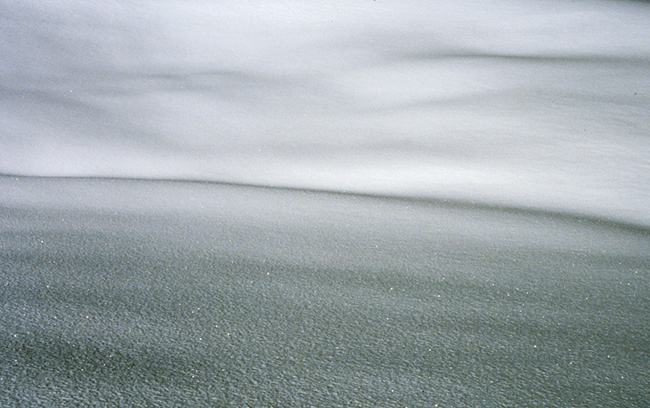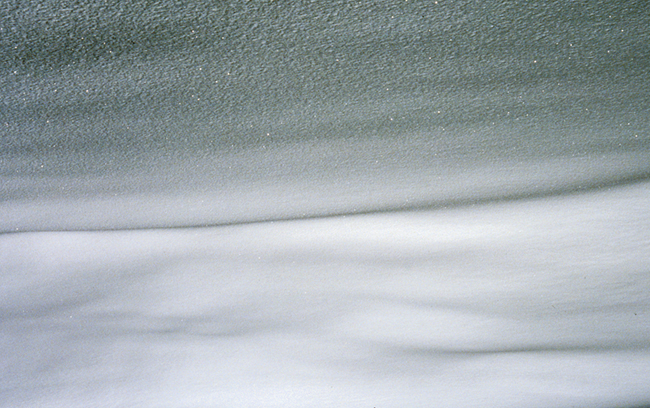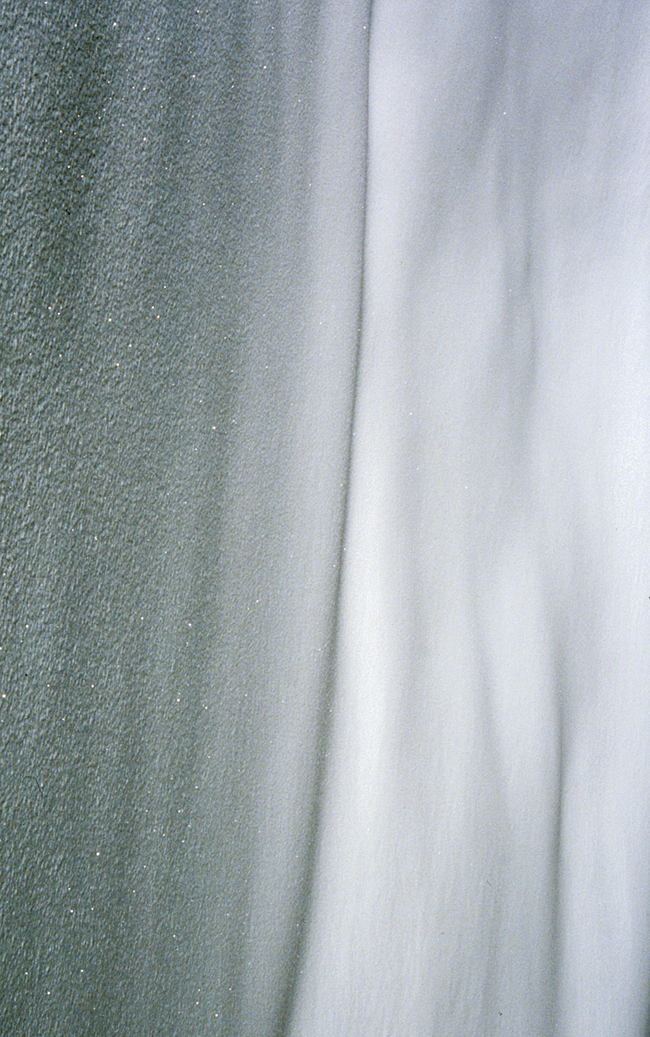HELENA WITTMANN

A desert,
captured with a 35mm camera on a black and white film. The sand stretches across the expanse, gentle hills structure the landscape. The sky hardly sets itself apart from the landscape. Only the dark horizon line separates sky and earth in this picture. The clouds stretch into streaks. Nothing else can be seen. Nothing else shows up.

A blanket made of non-woven fabric.
The individual fibres are not woven together, their peculiar adherence results in a soft surface. In front the blanket is taut over a mattress. Slight distortions run over the stretched surface. This reveals where the fabric is stuck under the mattress outside the frame. A crease in the middle of the picture becomes softer and softer from left to right. Diffuse white light falls from the window onto the guest bed.

A firmament of stars
in a Norwegian snowy landscape. Recorded on an already expired and very light sensitive black and white negative film. In the development process the material was pushed so that the rough grain becomes visible in the area of the sky. The snow cover seems to shine, it reflects the sparse light that is present. The horizon lies far away and is outlined in a diffuse dark line. No human being far and wide.

A salt desert,
captured with some distance from a much higher mountain. Diffuse shadows of clouds are drawn over the huge area. The salt arranges itself polygonically, but from this distance one recognizes only that the surface is not completely even. The white is not completely white.

A snowy landscape,
captured on a color slide positive film. In the front a small hill can be seen. Where it falls into an uneven surface, there is a shadow line that extends in the image depth to the upper edge of the frame. The snow cover is completely untouched, no traces can be seen. It is so thick that only larger bumps of the landscape can be seen. These slight slopes cast diffuse shadows on the surface. On the hill some snow crystals glitter in the sunlight.

A thin curtain of white silk.
The window is tilted so that the fine fabric moves in the draught. At the top the curtain is blown closer to the roughly plastered wall on one side, further down the structure of the surface becomes blurred in the greater distance between the wall and the window. A slight motion blur in the curtain results from the slightly longer exposure time with which the picture was taken. The daylight is scattered by the materiality of the textile and falls diffusely into the room.
—
Helena Wittmann was born 1982 in Neuss, Germany. Originally studying Spanish and Media Studies in Erlangen and Hamburg, she went on to attend The Hochschule für bildende Künste Hamburg (HFBK) between 2007 – 2014. In her films and within her artistic practice, rooms constitute much more than just bare venues of a storyline. She questions and contextualises the boundaries of these rooms, in them, with them, on them and along them. Since 2015 she is working as artistic research assistant at The Hochschule für bildende Künste. Her work was shown internationally in exhibitions and film festivals.
